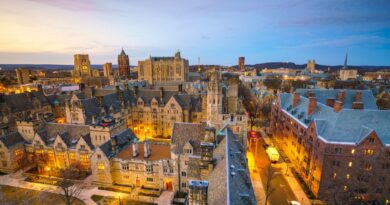Brooklyn Museum in Brooklyn NY is a Cultural Gem
The Brooklyn Museum, located in the heart of Brooklyn, New York, is one of the oldest and largest art museums in the United States. With a rich history that spans over a century, the museum is a vital part of Brooklyn’s cultural landscape. It is home to an impressive collection of artworks that range from ancient artifacts to contemporary masterpieces, making it a must-visit destination for art lovers and history enthusiasts alike.
A Brief History of the Brooklyn Museum
The Brooklyn Museum was founded in 1895 as part of the Brooklyn Institute of Arts and Sciences. The museum’s original mission was to provide the people of Brooklyn with access to art and cultural education. The building, designed by the renowned architectural firm McKim, Mead & White, was conceived as a grand Beaux-Arts structure, reflecting the ambition of the museum’s founders to create a cultural institution of national significance.
Over the years, the Brooklyn Museum has evolved and expanded, both in its physical space and its collections. Today, it occupies a 560,000-square-foot building and houses nearly 1.5 million works of art, making it one of the largest and most comprehensive art museums in the country.
The Museum’s World-Class Collections
The Brooklyn Museum’s collections are renowned for their diversity and breadth. Spanning 5,000 years of history, the museum’s holdings include art from almost every culture and period. Among its most celebrated collections are those of ancient Egyptian art, American art, and African art.
The museum’s Egyptian collection is one of the finest in the world, featuring over 1,200 objects that offer a comprehensive overview of ancient Egyptian culture. Highlights include the limestone statue of the Pharaoh Thutmose III and the intricately decorated coffins of the priest Hor and his wife, Nedjmet.
The American art collection at the Brooklyn Museum is equally impressive, encompassing works from the colonial period to the present day. Notable pieces include Gilbert Stuart’s portrait of George Washington and works by leading American artists such as Edward Hopper, Georgia O’Keeffe, and Norman Rockwell.
The museum’s African art collection is one of the most important in the United States, featuring a wide array of objects that reflect the diversity and richness of African cultures. The collection includes masks, sculptures, textiles, and ceremonial objects from across the continent.
Special Exhibitions and Installations
In addition to its permanent collections, the Brooklyn Museum is known for its dynamic special exhibitions and installations. These exhibitions often explore contemporary issues, engage with current cultural trends, and showcase emerging artists.
The museum’s past exhibitions have included everything from retrospectives of iconic artists like David Bowie and Jean-Michel Basquiat to explorations of themes such as feminism, social justice, and identity. These exhibitions are designed to provoke thought, inspire dialogue, and connect the museum’s visitors with the world around them.
One of the most famous installations at the Brooklyn Museum is Judy Chicago’s The Dinner Party. This landmark work of feminist art, created between 1974 and 1979, is a symbolic history of women in Western civilization, presented as a banquet table with place settings for 39 influential women. The installation is housed in the museum’s Elizabeth A. Sackler Center for Feminist Art, which is dedicated to the study and exhibition of feminist art.
The Museum’s Architecture and Design
The Brooklyn Museum’s architecture is as impressive as its collections. The original Beaux-Arts building, with its grand staircase and ornate facade, is a masterpiece of late 19th-century design. Over the years, the museum has undergone several renovations and expansions to accommodate its growing collections and to better serve its visitors.
One of the most significant changes to the museum’s architecture was the addition of the modern glass pavilion, designed by the architectural firm Polshek Partnership, in 2004. This pavilion, which serves as the museum’s main entrance, creates a striking contrast with the historic building and provides a welcoming, light-filled space for visitors.
Inside the museum, the galleries are designed to enhance the visitor experience, with spacious rooms, natural light, and thoughtful layouts that allow the artworks to be appreciated in context. The museum also features several outdoor spaces, including a sculpture garden and a terrace with views of the surrounding neighborhood.
Educational Programs and Community Engagement
Education and community engagement are central to the Brooklyn Museum’s mission. The museum offers a wide range of programs for visitors of all ages, designed to deepen their understanding and appreciation of art.
For children and families, the museum hosts art-making workshops, storytime sessions, and interactive tours that encourage young visitors to explore the museum’s collections in a fun and engaging way. The museum’s Teen Programs offer opportunities for middle and high school students to engage with art through internships, workshops, and special events.
For adults, the Brooklyn Museum offers lectures, artist talks, and film screenings that provide insight into the museum’s exhibitions and collections. The museum also collaborates with local artists and community organizations to create programs that reflect the interests and concerns of Brooklyn’s diverse population.
One of the museum’s most popular events is First Saturdays, a monthly event that offers free admission and features live music, performances, art-making activities, and gallery talks. First Saturdays attract thousands of visitors each month and have become a beloved Brooklyn tradition.
The Brooklyn Museum’s Role in Contemporary Culture
The Brooklyn Museum has positioned itself as a leader in the cultural landscape of New York City and beyond. The museum is known for its commitment to social justice and its willingness to address complex and challenging issues through art. This approach has earned the museum a reputation as a forward-thinking institution that is unafraid to engage with the pressing issues of our time.
In recent years, the museum has hosted exhibitions that explore topics such as immigration, race, gender, and climate change. These exhibitions often feature works by contemporary artists who use their art to comment on and critique societal norms and injustices.
The museum’s engagement with contemporary culture extends beyond its exhibitions. The Brooklyn Museum actively participates in the cultural life of Brooklyn and New York City, partnering with local organizations, schools, and community groups to create programming that reflects the diversity and vibrancy of the borough.
Visiting the Brooklyn Museum
The Brooklyn Museum is located at 200 Eastern Parkway, Brooklyn, New York. It is easily accessible by public transportation, with several subway lines and bus routes serving the area. The museum is open Wednesday through Sunday, with extended hours on Thursdays and Fridays.
Admission to the museum is suggested, meaning visitors can choose how much they would like to contribute. This policy reflects the museum’s commitment to making art accessible to all.
Visitors to the museum can also enjoy dining at the museum’s cafe, which offers a selection of seasonal dishes, or shop for unique gifts and souvenirs at the museum’s gift shop. The museum’s proximity to Prospect Park, the Brooklyn Botanic Garden, and the Brooklyn Public Library makes it an ideal destination for a day of cultural exploration in Brooklyn.
Conclusion
The Brooklyn Museum is more than just a repository of art; it is a vibrant cultural institution that plays a vital role in the life of Brooklyn and New York City. Whether you’re interested in ancient history, contemporary art, or simply looking to explore one of Brooklyn’s most beautiful buildings, the Brooklyn Museum offers something for everyone. Its rich collections, dynamic exhibitions, and commitment to education and community engagement make it a must-visit destination for anyone interested in art and culture.
Discover more from City Towner
Subscribe to get the latest posts sent to your email.




